R' Yoni Gerstein: "I Can No Longer Just Draw Anything, and I Don't"
The artist R' Yoni Gerstein no longer illustrates children's books, instead using his talents to illustrate religious texts. "The difference between ordinary drawings and Jewish ones cannot be described," he emphasizes. Why does each book take him years to complete?
 Artist R' Yoni Gerstein
Artist R' Yoni GersteinIt started a little over 30 years ago when R' Yoni Gerstein, the famous artist, was studying at a yeshiva for those returning to the faith. During those days, he didn't tell anyone that he was actually an artist with a rich past painting career. "The truth is, I was a bit embarrassed by it," he notes, "I was already past my return to faith stage and felt that the paintings were so trivial compared to Torah study. I wanted to dedicate my all to studying."
Illustrating Shabbat
However, one day he had the opportunity to draw something for an acquaintance. "My friend, a diligent scholar, asked me for a drawing to illustrate something he learned in Tractate Shabbat. I drew it, and it caused great excitement in the yeshiva; they enlarged the poster and hung it. Scholars approached me and told me it really helped them in their studies. This led me to draw more and more illustrations for illustrating what was learned in Tractate Shabbat. For three years, I drew to illustrate the Mishnayot in Tractate Shabbat. I would study with my study partner and, in the process, draw and illustrate. It also personally helped me understand the material, and I was excited to see how much it helped other scholars."
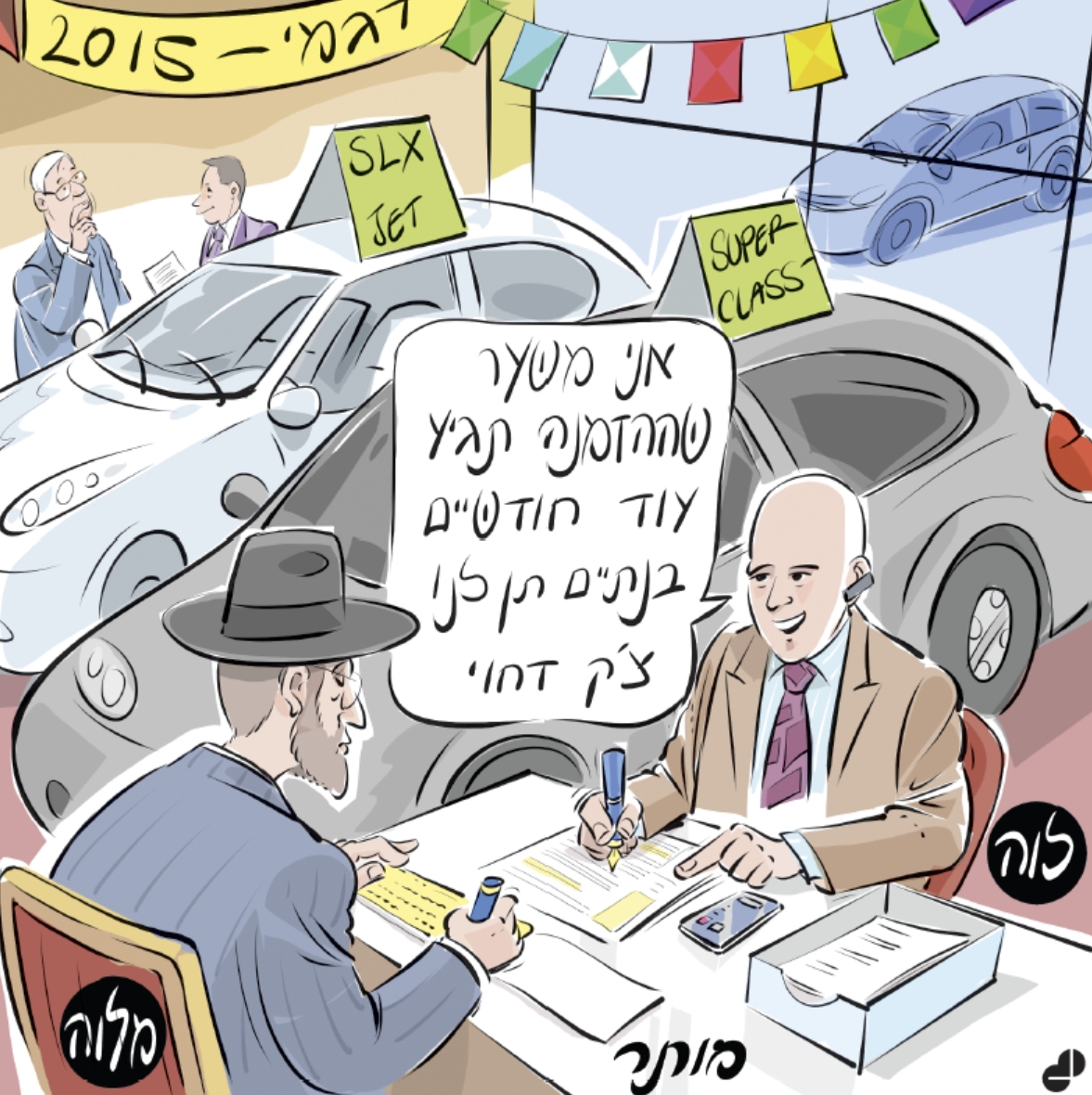 (Drawings: Yoni Gerstein)
(Drawings: Yoni Gerstein)Why did the project take three years?
R' Yoni explains that working on each drawing was not simple at all. "Take, for example, the topic mentioned in Tractate Shabbat - 'Melter's Crucible.' When I studied the subject, I asked dozens of scholars if they knew what a melter's crucible is, and none knew. Until I managed to locate an elderly Yemenite jeweler who described to me the melter's crucible they had in Yemen, which perfectly fit and aligned with the commentary of Bartenura. It shed wonderful light on the entire subject being studied. In general, during the time I studied the tractate, I also opened many archaeology books to see the types of ovens from the past and other items used in those times. This taught me a lot. Eventually, I published the book in several editions that were grabbed. I remember the day the books came out of the printing press – I was excited to see how a venture that wasn't initially intended for publication and profit succeeded in producing books that interest so many people, and their whole purpose is to expand the Torah and assist learners."
A Years-Long Project
R' Yoni eventually moved on to study Tractate Eruvin, considered one of the three most difficult tractates in the Babylonian Talmud. "Anyone who studied the tractate knows how many legal details and nuances are involved in this entire tractate," explains R' Yoni, "It's not for nothing that precisely on Tractate Eruvin, the holy Rashi chose to sketch numerous schemes, and also the Chafetz Chaim drew several legal points he felt were necessary. It's simply a difficult tractate."
R' Yoni decided to jump into the deep end and use his drawing skills to illustrate what was learned in this tractate. "Unlike the drawings for Tractate Shabbat, which are also suitable for children, this time it was a project intended for the benches of the Beit Midrash, really just for Torah scholars," he explains. "I worked on the project for eight years, with much thought given to charting distances, setting boundaries, emphasizing critical legal timing divisions, and more. I consulted a lot, although I suspected that the book would not be very popular since, unlike Tractate Shabbat, not everyone studies Tractate Eruvin. I released an edition, and it sold out, and now I am releasing a new edition because this is the tractate currently studied as part of the daily Daf Yomi."
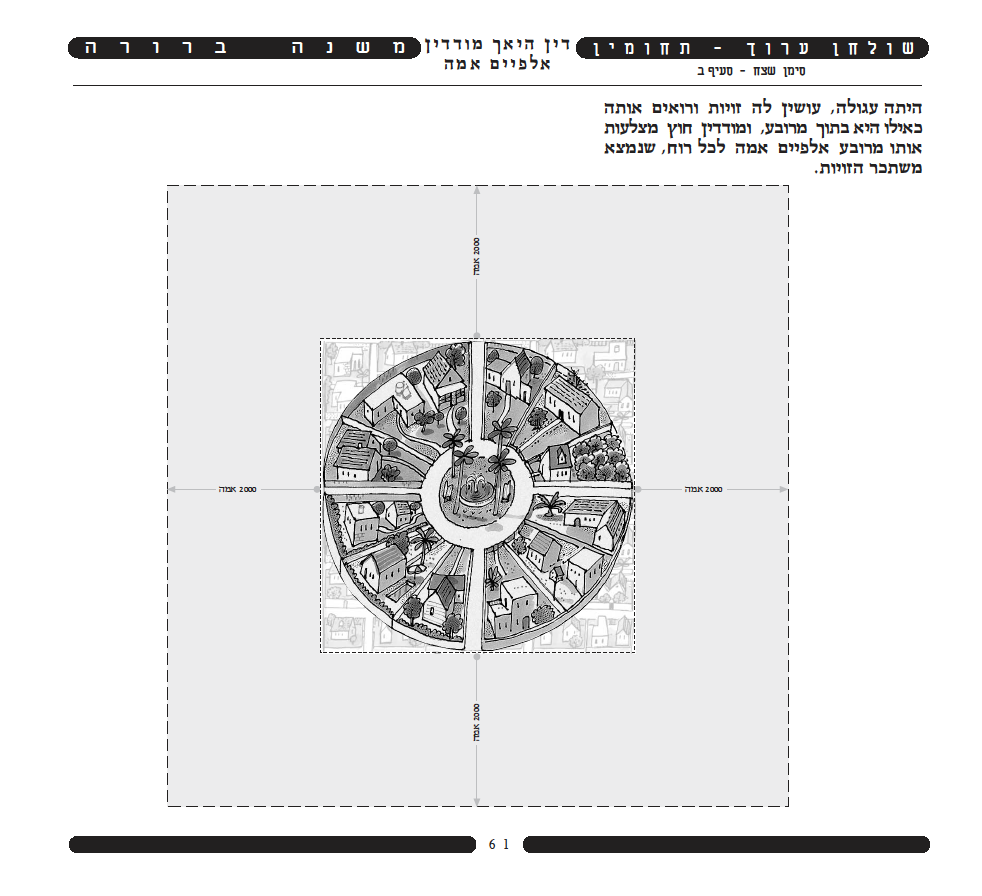

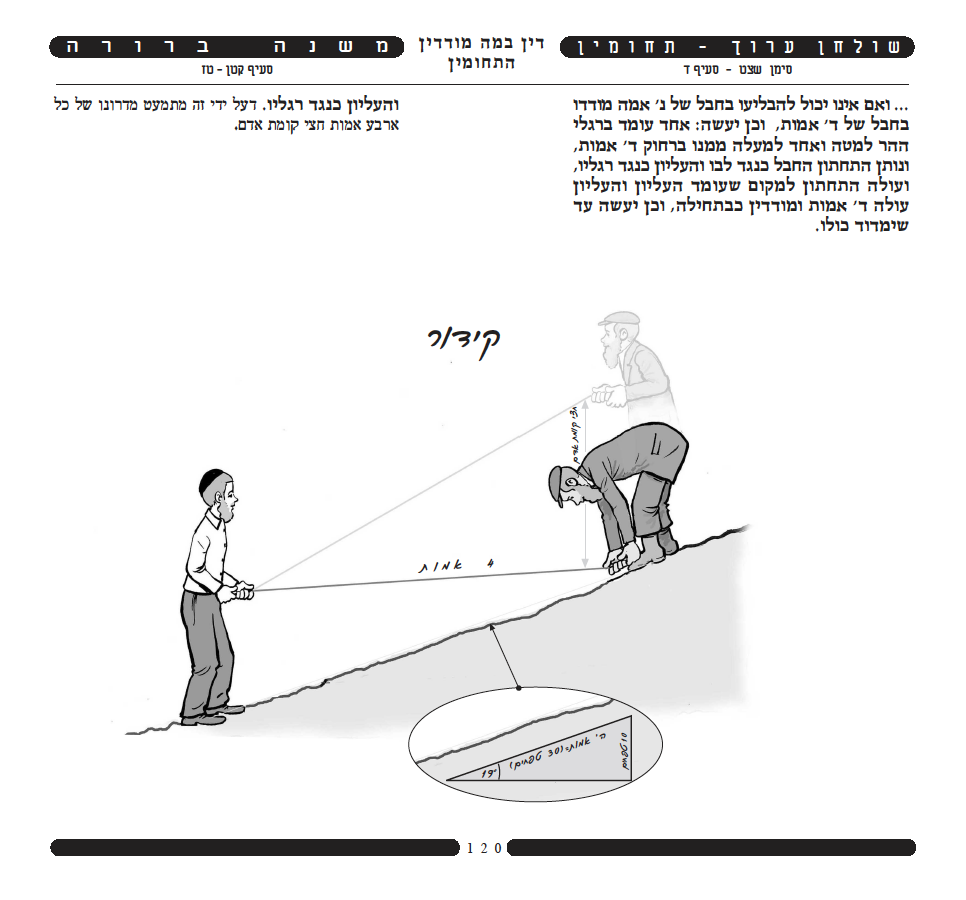
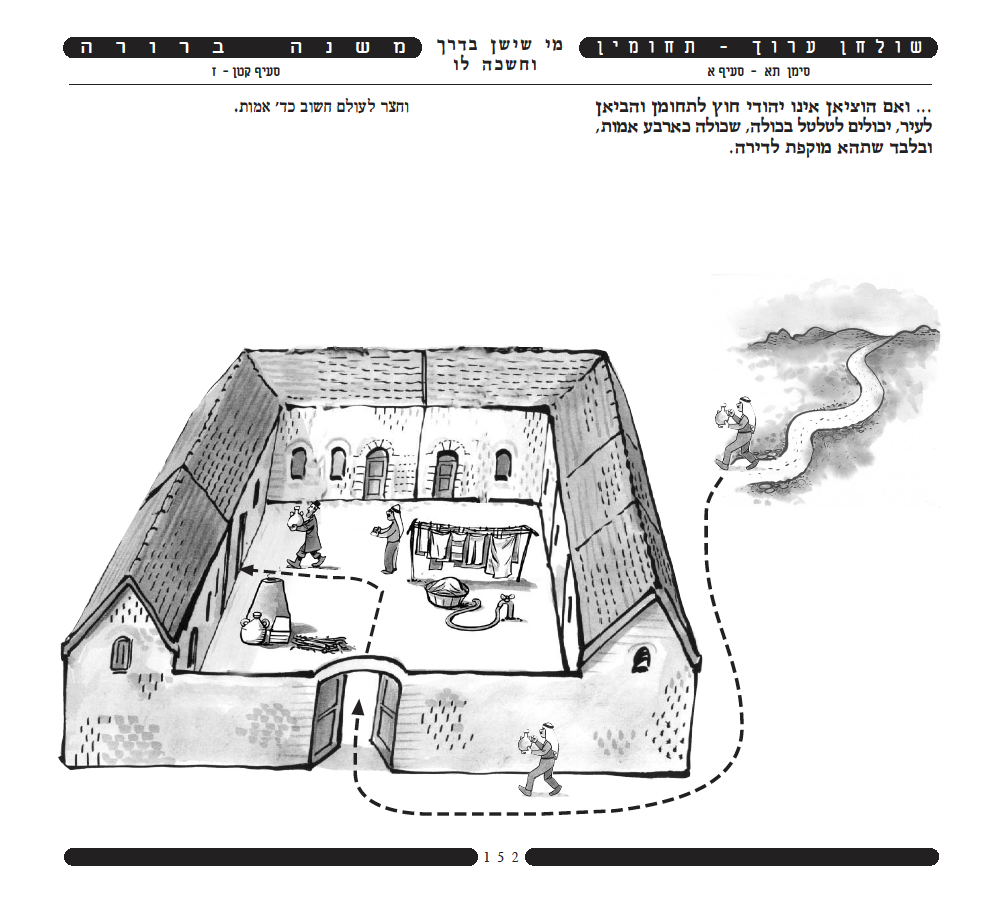
No More Children's Books
R' Yoni doesn't rest for a moment, and the next subject he chose to tackle is the laws of interest. "Initially, when Rabbi Pinchas Wind from the Rabbinical Court of Interest Affairs approached me and suggested I illustrate the laws of interest, I didn't understand what there is to illustrate. After all, what is interest? When one person lends money to another and, in return, gives a higher sum back. What can be added in illustrations? Only after time passed and we began regularly publishing the laws with illustrations did I understand how necessary and interesting the subject is. After all, nowadays, so much deals with money, banks, credit cards, and other topics that can border on interest, and it's a serious prohibition, from the Torah."
In this case, R' Yoni notes that writing the book took six years, during which he endlessly discussed the studied material with Rabbi Wind and even established a special halacha line on interest topics, which received hundreds and sometimes thousands of calls weekly.
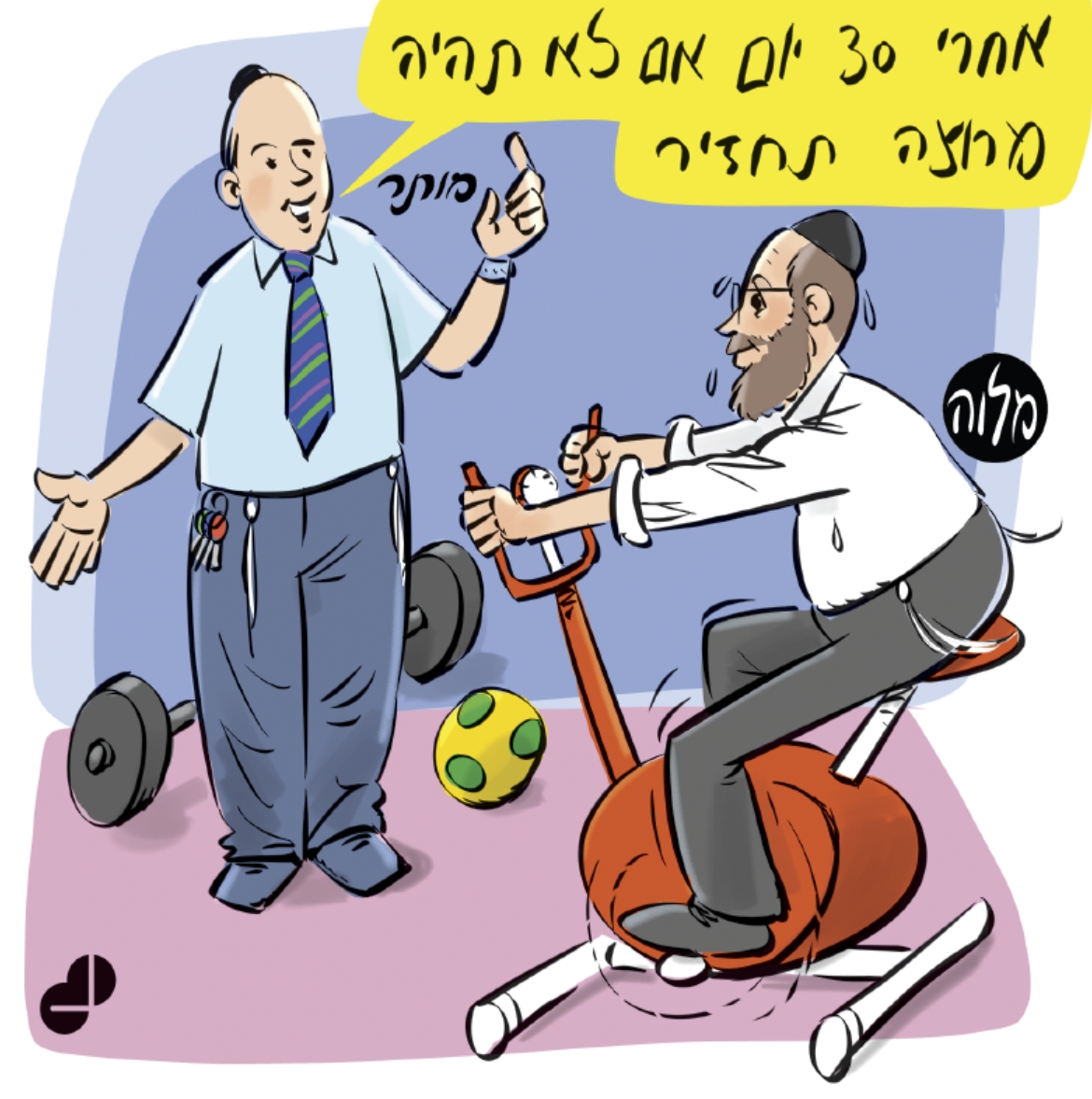 (Drawings: Yoni Gerstein)
(Drawings: Yoni Gerstein)"Additionally, in recent years, I've been drawing illustrations for the halachic books of my rabbi and mentor – Rabbi Yitzchak Zilberstein, the Rabbi of the Ramat Elchanan neighborhood. I truly see it as a mission to take my drawing talent and apply it to sacred texts. I see my drawings as a tool to sweeten the Torah," he notes.
Wait, and you no longer draw for children's books like those of Menucha Fuchs and Chaim Walder?
"In the past, I drew for these famous authors as well as for other authors and platforms. I don’t regret it. But only when I started drawing for holy books did I understand the value of Jewish art. Before then, when I drew before my return to faith, my drawings were trivial. I could paint landscapes, or children, or anything else. But I didn't feel any satisfaction in what I drew. Later, I drew for children's books in the Haredi sector and already felt they had beauty, and sometimes even spirituality, but the satisfaction I feel when painting for holy books – that can only come from Jewish art. Not to mention the immense benefit I see from it, as it helps me learn myself, and since I started these drawings, my learning has become more tangible and looks completely different."
When the Rabbi and famous artist Yoni Gerstein, visited the late Rabbi Shach, to consult him about a certain medical question – he was surprised to discover that the Rabbi steered the conversation in a completely different direction: Rabbi Shach asked him about his occupation and upon hearing the response – gave him advice that Gerstein says 'saved his life'. Watch

